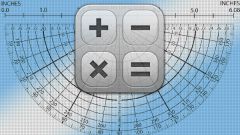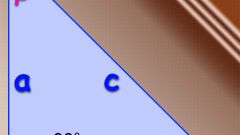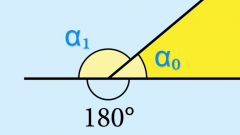Right triangle
Initially, the sine and cosine arose from the need to calculate values in right triangles. It was observed that if the value of the degree measures of the angles in a right triangle do not change, the aspect ratio, no matter how these parties are neither changed in length, remains always the same.
And it was introduced the concepts of sine and cosine. The sine of an acute angle in a right triangle is the ratio of the opposite leg to the hypotenuse, cosine – adjacent to the hypotenuse.
Cosines and sines
But the cosines and sines can be applied not only in right triangles. To find the value of the obtuse or acute angle, the sides of any triangle, it is enough to apply theorem law of cosines and law of sines.
The theorem of the cosines is quite simple: the squares of the sides of a triangle is equal to the sum of the squares of the other two sides minus twice the product of these sides into the cosine of the angle between them."
There are two interpretations of the theorem of sines: small and extended. According to small: "In a triangle the angles opposite the sides are proportional". This theorem often extend through the properties of a triangle circumscribed about the circle: In a triangle the angles opposite the sides are proportional and their ratio is equal to the diameter of the circumscribed circle".
Derivatives
The derivative is a mathematical tool that indicates how quickly changes in the function of relative change of its argument. Derivatives are used in algebra, geometry, Economics and physics, the number of technical disciplines.
When solving problems you must know the table values of the derivatives of trigonometric functions: sine and cosine. The derivative of sine is cosine, and cosine - sine, but with the sign "minus".
Application in mathematics
Very often the sines and cosines are used when solving right-angled triangles and problems associated with them.
The convenience of sines and cosines is reflected in the technique. Corners and sides were just judged by the theorems of cosines and sinuses by breaking up the complex shapes and objects with "simple" triangles. Engineers and architects, often dealing with the calculations of the aspect ratio and degree measures, spending a lot of time and effort to calculate the cosines and sines of angles is not tabular.
Then "help" came to the table Bradis containing thousands of values of sines, cosines, tangents and cotangent different angles. In Soviet times, some teachers were forced to teach their charges page tables Bradis by heart.



